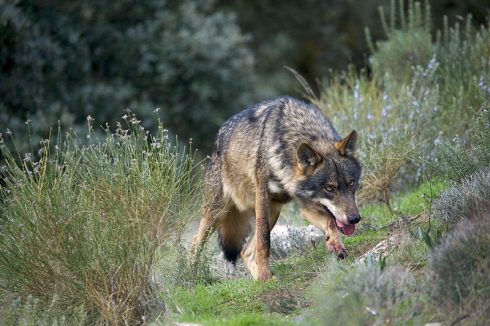Just 45 minutes from the heaving Costa del Sol, and packed with stunning scenery and great food, Jon Clarke explains why the Andalucian lake district is a good alternative to the coast
WITH its azure blue waters and a backdrop of pines, it has the feel of being like a holiday island in the Balearics.
Yet, this paradise is rather closer… in fact just 45 minutes inland from the Costa del Sol.
The Andalucian Lake District is a brilliant alternative to the overdeveloped beaches of Fuengirola and Marbella – and a break from the relentless winds of Tarifa or Vejer.
Quieter – and a good deal cheaper – the turquoise lakes were created when a dam was built in the 1920s across the dramatically-high Guadalhorce river gorge, known as the Garganta del Chorro.
You can pitch your tent along the shore and there are a number of lovely lakeside beaches to lie on, not to mention swim off, so don’t forget your bucket and spade.
And this year, the lakes are full again for the first time in over two decades, after a winter of heavy rains.
The upland area, much of which has been designated a natural park, has a breathtaking mix of historic sites, villages and scenery.
Sitting amid craggy mountain surroundings, the half-dozen lakes are a magnet for wildlife, with eagles, vultures and bee-eaters swooping around.
It’s ideal for a day trip from the coast and it will appeal to the Indiana Joneses among your children.
As well as the lakes, they can look forward to ruined cities, swamps and tunnels through vertiginous rock. Alternatively, there are enough good hotels to make it a destination in its own right.

Your way in to the Lake District will probably be Ardales, which tumbles down a hillside and has an amazing little church complete with ancient Muslim minaret.
Take the road towards El Chorro gorge, which is one of the most spectacular in the Iberian peninsula and impossible not to stop and take a photo. The children will love the theme-park drama of the descent into the increasingly narrow ravine.
It’s certainly a humbling experience, as the sky darkens and you’re met with nearly sheer walls, sometimes 1,300ft high.
We had to suspend disbelief as we watched a group of thrill-seekers clambering gingerly along a path pinned to the gorge’s side 300ft up.
It has become a rite of passage for teenagers (and extreme sports enthusiasts)
Known as the King’s Pathway (or Caminito del Rey), it has become a rite of passage for teenagers and extreme sports enthusiasts.
With large sections missing and the handrail all but collapsed, the rickety wooden track requires a series of long, suicidal leaps and nerves of steel to attempt.
It’s little wonder that the track, which has been officially closed since 1992, is on the verge of restoration, with a multi-million euro scheme just months from being passed.
The nearby village of El Chorro is small but a number of hotels and restaurants have sprung up to cater for climbers. Its main allure is its position by Lake Gaitanejo and the spectacular soaring limestone crags that envelop it. An explorer’s paradise – including a fantastic railway walk which climbs up the side of the gorge.
Watch out, though – while this is just a branch line, trains do occasionally rumble past.
A great excursion, by foot or car, heads up towards the ancient ruined city of Bobastro, with a turn off on the El Chorro to Ardales road.
An incredibly atmospheric place, it was carved out of rock by a rogue, rebellious Arabic leader to escape the overbearing orders from the caliphates of Cordoba at the time.
From here, head towards the main Guadalteba-Guadalhorce reservoir, where a winding road will take youtowards Campillos and Teba, going across dams and to more great lunch stops.
You would do well to park up at either the camp site or official car park and walk down to shores for a swim and some sunbathing.
Not far from here is Andalucia’s biggest natural lake, the Laguna de Fuente de Piedra.
It is the second most important breeding ground for flamingos in Europe. Each year up to 20,000 pairs come to breed.
You can drive around the lake, and a visitors’ centre near the village of Fuente de Piedra gives advice, maps and tours.
The journey back is on the windy road to Almogia, via the national park of El Torcal. Here, you can climb limestone formations, watching out for 30 types of orchid, until you’re high enough to see the coast of Africa.
Sadly, everything is downhill from here.











i have been there countless times and the last time was last week it is a 6000 euro fine for walking on the railway line and is patroled by security guards i have actualy done the gorge many time really fantastic but the info you give seems wrong as to walking the track